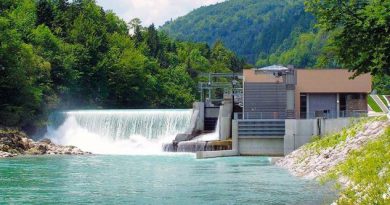As Odisha Picks Up The Pieces after Fani, A Call For Help
 Pic Courtesy: Odisha Sun Times
Pic Courtesy: Odisha Sun Times
Consider this. When compared to the super cyclone of 1999, which claimed almost 10,000 lives according to official records, cyclone Fani has been managed brilliantly, with less than 70 fatalities. Unfortunatey, that’s where the good news ends.
A government official we spoke to in Puri, perhaps put it best when he asked this rhetorically, instead of answering our questions, which he felt were too early to answer. ” Why do you think there is this apathy. Is it because too few died? Or is it because this is not a state ruled by the central government party? Or it it simply our bad luck to have been stuck during the election cycle? ”
We believe the answer could be either, or actually, all of the questions he raised.
Irrespective , the damage caused by Fani is very real, and in some ways, a pointer to the massive effort India might be facing when it comes to its east coast, which is much more susceptible to cyclones than its western seaboard.
With some of the most intense storms in recorded history coming in the past 25 years, the east coast faces a moment of truth. It needs a complete relook at the quality of infrastructure and resilience of the same to such events, or we could be facing a recurring challenge of fixing the damage every few years. a far more expensive proposition than it might seem.
Same road. Janpath of Bhubaneswar – Before and After #Fani pic.twitter.com/pbt93waKv8
— Tathagata Satpathy (@SatpathyLive) May 10, 2019
Consider just the power infrastructure. Puri still has seen barely any power restored, with only areas near the critical Jagannath temple on priority, with the famous rath yatra due in the last week of May. With no question of deferring that, it has lent a sense of urgency to the repair work going on, providing collateral benefits to the people in the area. But for vast parts of the city, both water and electricity remain absent, with people largely left to their own devices, or a tough struggle to collect water from government providers in the blazing May sun.
According to early reports, 5,030 km of 33-kV lines, 38,613 km of 11-kV lines, 11,077 distribution transformers and 79,485 km of overhead-transmission lines were damaged by the cyclone . The storm also uprooted at least 1,56,000 utility poles that will need to be re-installed, according to estimates. This time, satellite images have also confirmed the sheer scale of damage, with before and after visualisations of cities of Cuttack and Puri, one of the worst hit. While the 1999 super cyclone was remembered for the huge huge damage to Paradip port, Fani will be remembered for the devastation wrought in Puri and elsewhere, where thousands of trees stand fallen or denuded.
By all measures, there is a case to declare the event a national disaster, like the 1999 event.
A letter from Odisha Chief Minister Naveen Patnaik to Prime Minister Modi has been shared extensively in media, for thanking him for his support. What has not been commented on has been the urgency in the Chief Minister’s request for massive central help to build close to 500,000 new houses on priority, with the Chief Minister even going to the extent of placing work orders in ANTICIPATION of formal confirmation. Certainly something truly rare in a bureaucracy, where work even after formal confirmation can take months to start. In fact, if the issue was not so serious one would have considered this a clever political fait accompli for the central government.
be that as it may, beyond the urgent, the government needs to consider the long term implications of these storms now. The power transmission infrastructure simply cannot be allowed to go under every time. Unfortunately, the best solution to that seems to be to take most of it underground, a possibility that will take a huge amount of political will and cost a lot more. Much lie the difference in building an overground versus an underground metro, where the latter is considered only when aesthetically or a security imperative, an underground transmission system, at least in the more sensitive coastal areas, must be considered.
In places like Germany, it has been done for aesthetic reasons even, in areas where onshore wind energy was meeting massive local resistance.
Beyond the power infrastructure is the usual need to follow the letter of the law when it comes to housing following coastal zoning regulations. A situation that is sadly followed only very flexibly in most coastal cities today.
Most importantly, our institutions need to do much better than this to respond . An election cycle is certainly no excuse for the rest of the central agencies to step in immediately, although the National Disaster Response Force (NDRF), deserves all the praise it gets for its work so far.
The next two months will be crucial for the state to limit fatalities, as the monsoons hit he state by June 10. The battle to control Fani has just started. The worst outcome possibly would be to see a huge effort made for the successful conduct of the Rath Yatra, and let that allow people to believe that the worst is behind us. The real battle will actually start after that for the survivors. they will need the lords blessings, and our support to make it happen.
To contribute to Cyclone Relief, pls visit the chief ministers’s relief fund site.
Besides this, many other private initiatives have been launched, from Paytm, to even donating a free meal through the Zomato app for Rs 50. There is an option for every kind of intent and ability, don’t hold back.




